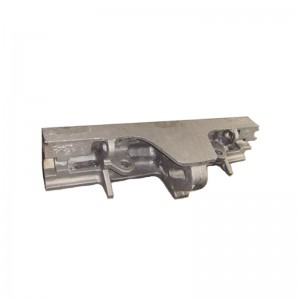- Afrikaans
- Albanian
- Amharic
- Arabic
- Armenian
- Azerbaijani
- Basque
- Belarusian
- Bengali
- Bosnian
- Bulgarian
- Catalan
- Cebuano
- China
- China (Taiwan)
- Corsican
- Croatian
- Czech
- Danish
- Dutch
- English
- Esperanto
- Estonian
- Finnish
- French
- Frisian
- Galician
- Georgian
- German
- Greek
- Gujarati
- Haitian Creole
- hausa
- hawaiian
- Hebrew
- Hindi
- Miao
- Hungarian
- Icelandic
- igbo
- Indonesian
- irish
- Italian
- Japanese
- Javanese
- Kannada
- kazakh
- Khmer
- Rwandese
- Korean
- Kurdish
- Kyrgyz
- Lao
- Latin
- Latvian
- Lithuanian
- Luxembourgish
- Macedonian
- Malgashi
- Malay
- Malayalam
- Maltese
- Maori
- Marathi
- Mongolian
- Myanmar
- Nepali
- Norwegian
- Norwegian
- Occitan
- Pashto
- Persian
- Polish
- Portuguese
- Punjabi
- Romanian
- Russian
- Samoan
- Scottish Gaelic
- Serbian
- Sesotho
- Shona
- Sindhi
- Sinhala
- Slovak
- Slovenian
- Somali
- Spanish
- Sundanese
- Swahili
- Swedish
- Tagalog
- Tajik
- Tamil
- Tatar
- Telugu
- Thai
- Turkish
- Turkmen
- Ukrainian
- Urdu
- Uighur
- Uzbek
- Vietnamese
- Welsh
- Bantu
- Yiddish
- Yoruba
- Zulu
Dez . 23, 2024 16:17 Back to list
Molds and Pallets for Ductile Iron and Cement Pipe Production
The Significance of Ductile Iron Cement Pipe Mold Pallets
In the construction and infrastructure sectors, the importance of reliable materials and components cannot be overstated. Among these, ductile iron cement pipes stand out due to their durability and strength, crucial for various water and sewage applications. The molds utilized to cast these pipes play a pivotal role in ensuring that the final products meet the stringent standards required for quality and performance. This article delves into the encapsulating world of ductile iron cement pipe mold pallets, examining their construction, advantages, and impact on the industry.
Understanding Ductile Iron and Cement Pipes
Ductile iron is a type of cast iron that possesses enhanced ductility, allowing it to bend and stretch without breaking. This property makes it particularly suitable for applications involving pressure, such as in wastewater management systems. When combined with cement, the resulting pipes gain additional resistance to corrosion and wear, which is essential for their longevity in harsh environments like sewage systems.
The production of these pipes requires precise molds that can withstand high temperatures and pressures during the casting process. The design and manufacturing of mold pallets are therefore critical in ensuring that the pipes exhibit the desired dimensions and structural integrity.
The Role of Molds in Pipe Production
Molds are integral to the production process of ductile iron cement pipes. They provide the necessary shape and support during the pouring of molten iron and cement mixtures. The quality of molds directly reflects the performance and durability of the finished product. Mold pallets are specifically designed to facilitate the efficient casting of pipes, optimizing the flow of molten material while ensuring easy release of the final product.
A well-constructed mold pallet is characterized by its resistance to thermal shock and deformation under pressure. Modern materials and engineering techniques allow for the creation of molds that endure the strenuous conditions of the casting process, thereby reducing overall production costs and downtime associated with mold failures.
Advantages of Ductile Iron Cement Pipe Mold Pallets
1. Enhanced Durability Mold pallets made from high-quality materials resist wear and tear over time, leading to fewer replacements and lower costs in the long run.
ductile iron cement pipe mold pallet

3. Improved Efficiency By reducing the release time of pipes from molds, these pallets enhance the overall production efficiency, allowing manufacturers to increase output without sacrificing quality.
4. Sustainability The use of durable materials in mold manufacturing promotes environmental sustainability. Fewer mold replacements mean less waste and lower resource consumption in the long term.
5. Versatility in Design Mold pallets can be tailored to accommodate various pipe sizes and specifications, making them a versatile solution for manufacturers who may need to produce different products.
The Impact on the Industry
In the larger context, the quality of ductile iron cement pipe mold pallets has significant implications for infrastructure development and maintenance. Reliable pipe systems are essential for urban development, industrial applications, and environmental sustainability. As cities grow and infrastructure ages, the demand for durable, high-quality pipes will escalate, necessitating advanced manufacturing techniques and materials.
Moreover, with increased emphasis on sustainable construction practices, manufacturers that prioritize the use of high-quality mold pallets not only benefit themselves but also contribute to a more sustainable future for the industry.
Conclusion
In conclusion, ductile iron cement pipe mold pallets represent a crucial aspect of modern construction and infrastructure development. Their role in ensuring quality, efficiency, and sustainability cannot be underestimated. As the industry continues to evolve, the technology and materials used in the production of these pallets will likely advance, further enhancing the capabilities and efficiency of ductile iron cement pipe manufacturing. By investing in high-quality molds, manufacturers will ensure that they remain competitive while contributing to the development of resilient infrastructure that meets the needs of future generations.
-
8mm Thin-Walled Cast Steel Manhole Cover Pallet Bottom Ring | Durable
NewsAug.04,2025
-
Premium Cast Iron Water Main Pipe: Durable, Corrosion-Resistant
NewsAug.03,2025
-
Durable Cast Iron Water Mains | AI-Optimized Systems
NewsAug.02,2025
-
High-Efficiency Propane Boiler for Baseboard Heat | Save Energy
NewsAug.01,2025
-
Premium Source Suppliers for Various Gray Iron Castings
NewsJul.31,2025
-
Durable Cast Iron Water Main Pipes | Long-Lasting
NewsJul.31,2025


